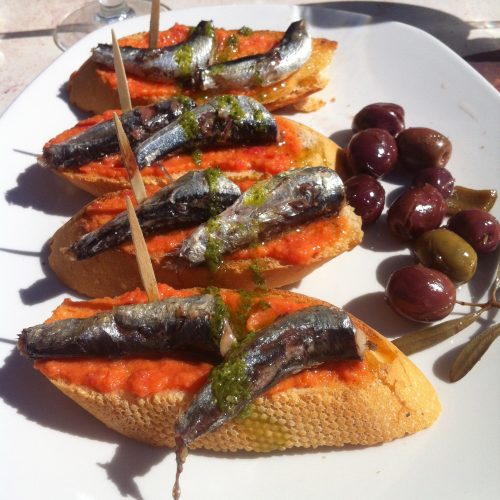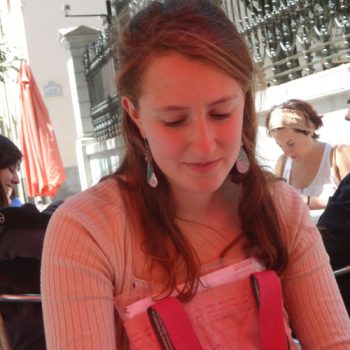
Spanish Style Eating
Dear Alex,
When going abroad we often think that the differences around eating will be exclusively related to the content of the dishes. However, this is not the case! Food and the way people eat are different across cultures. That is why we believe it is important to understand the general traditions and expectations when it comes to eating in Spain. We have talked about a lot of food related things over the years but one of the first things you should know is the timing for eating and what people are eating. The typical Spanish eating schedule can be broken down roughly into this timetable:
 Desayuno (breakfast—times vary, anywhere from whenever you wake up and 12 pm is acceptable):
Desayuno (breakfast—times vary, anywhere from whenever you wake up and 12 pm is acceptable):
What to expect to eat: Many Spaniards do not spend a lot of time preparing or eating breakfast and this first meal of the day. In fact, in many homes you might find that the adults don’t drink more than a café con leche or a colacao—the Spanish name brand chocolate milk—before leaving the house. If they do eat something, they may have some cookies or toast with sweet or savory toppings (read more about breakfasts here). Of course, this is possible because, in most jobs, people have about half an hour between 10 and 12 to have a coffee break, which is when they usually eat their “breakfast” and decide how to continuing to caffeinate their morning.
How to eat it: The main thing to know is that this is not a traditionally important meal and many locals will have their breakfast standing at the bar counter. Meeting for breakfast certainly happens—but more so among the guiri or older crowd.
Comida (Lunch—served between 1 and 4 pm):
What to expect to eat: For Spaniards, lunch is the most important and biggest meal of the day. Whether you have it out or at home with a Spanish family, you can probably expect two courses and dessert. While the first course is usually more of an appetizer such as salad or soup but, depending on what you have, it can feel like a whole meal in itself as well. The second course is commonly a meat or a fish dish but you may be able to find something vegetarian as well (we might recommend asking for two helping of the first course, which tends to be less meat focused, if you’re stuck). Dessert can be anything from a piece of fresh fruit to ice cream to baked dessert, so it all depends on the situation you find yourself in.
How to eat it: This is the most important meal of the day and, unless you’re in a major cosmopolitan city, you will see that most businesses, doctor’s offices, everything shut down in respect for the family meal. Be prepared to be stuffed and absolutely ready to take advantage of the siesta hour!
Merienda (snack time—between 5 and 7 pm):
After that huge meal and a nap, it’s only logical that Spaniards are in need of a pick-me-up coffee around this time. Even if you don’t need the coffee, this is an ideal time to grab a pastry, crepe, or light snack and a cup of tea while respecting the traditional eating schedule. You will also want to grab something now because the wait to 9 PM can otherwise seem really long.
 Cena (dinner—typically between 9 and 11 pm):
Cena (dinner—typically between 9 and 11 pm):
What to expect to eat: A big mistake you may find yourself making is getting really hungry between lunch and dinner and trying to eat a large dinner at 9 PM (or later). Like we said before, the biggest meal of the day in Spain is lunch and that is for a good reason—you don’t want to eat anything too heavy too late at night. If we are staying in, we will often have something like a salad or put together a surtido (an assortment of cheese and meat that we pair with olives or hummus and picos).
How to eat it: Yes, this meal is so late for us guiris but, with time, you will get used to it and probably actually end up loving it! Look forward to throwing together a nice assortment of cold-cuts and finger food with friends, ordering takeaway, or sitting down to some cañas with tapas until midnight.
 We hope this is useful for you but we also want you to know that understanding timing and getting a general idea of Spanish eating habits is just the beginning. We hope you are able to embark on this food journey for yourself and then you can see what you like and what you have to adapt to differently. ¡Buen Provecho!
We hope this is useful for you but we also want you to know that understanding timing and getting a general idea of Spanish eating habits is just the beginning. We hope you are able to embark on this food journey for yourself and then you can see what you like and what you have to adapt to differently. ¡Buen Provecho!
Sincerely,
Spain




